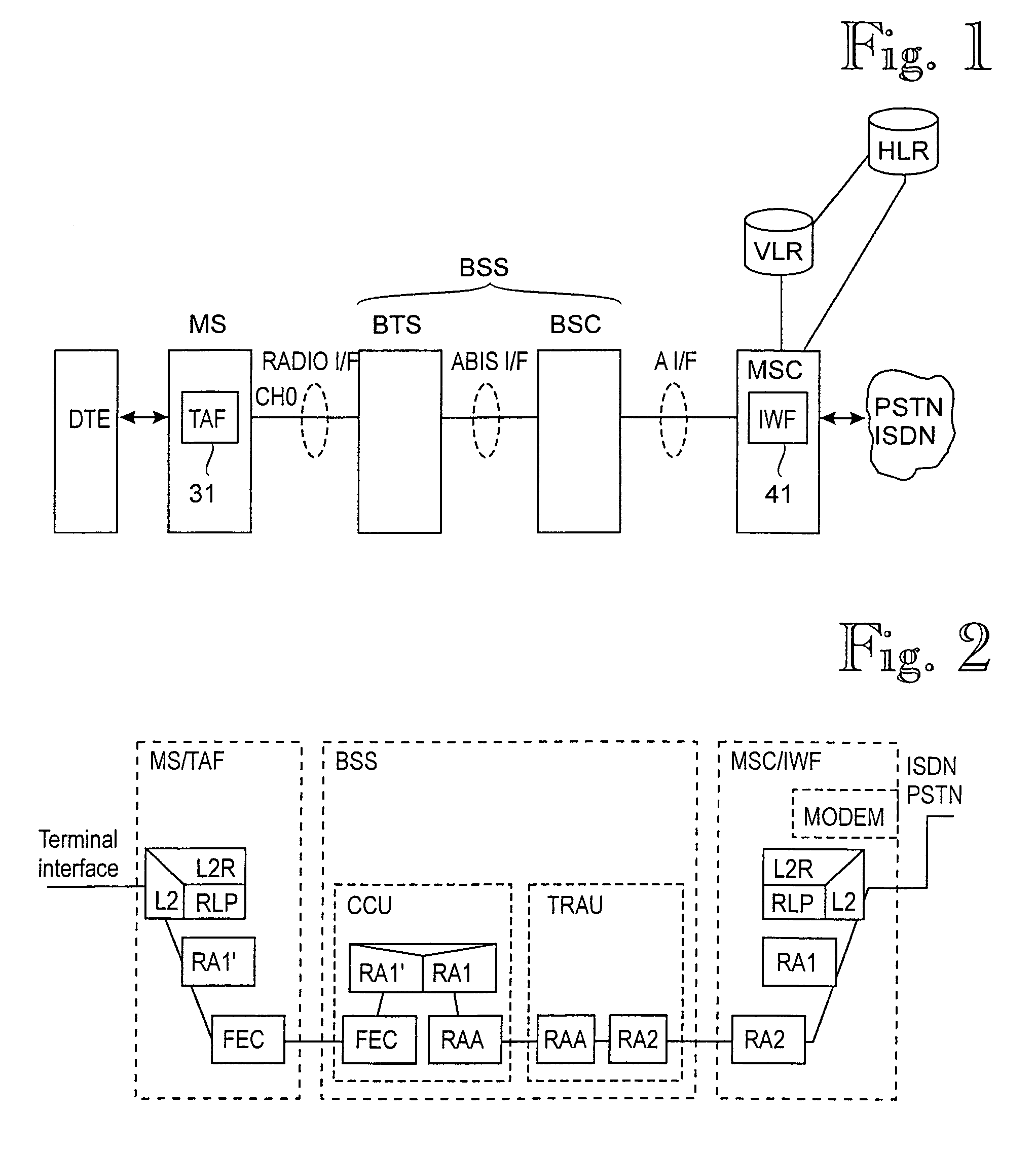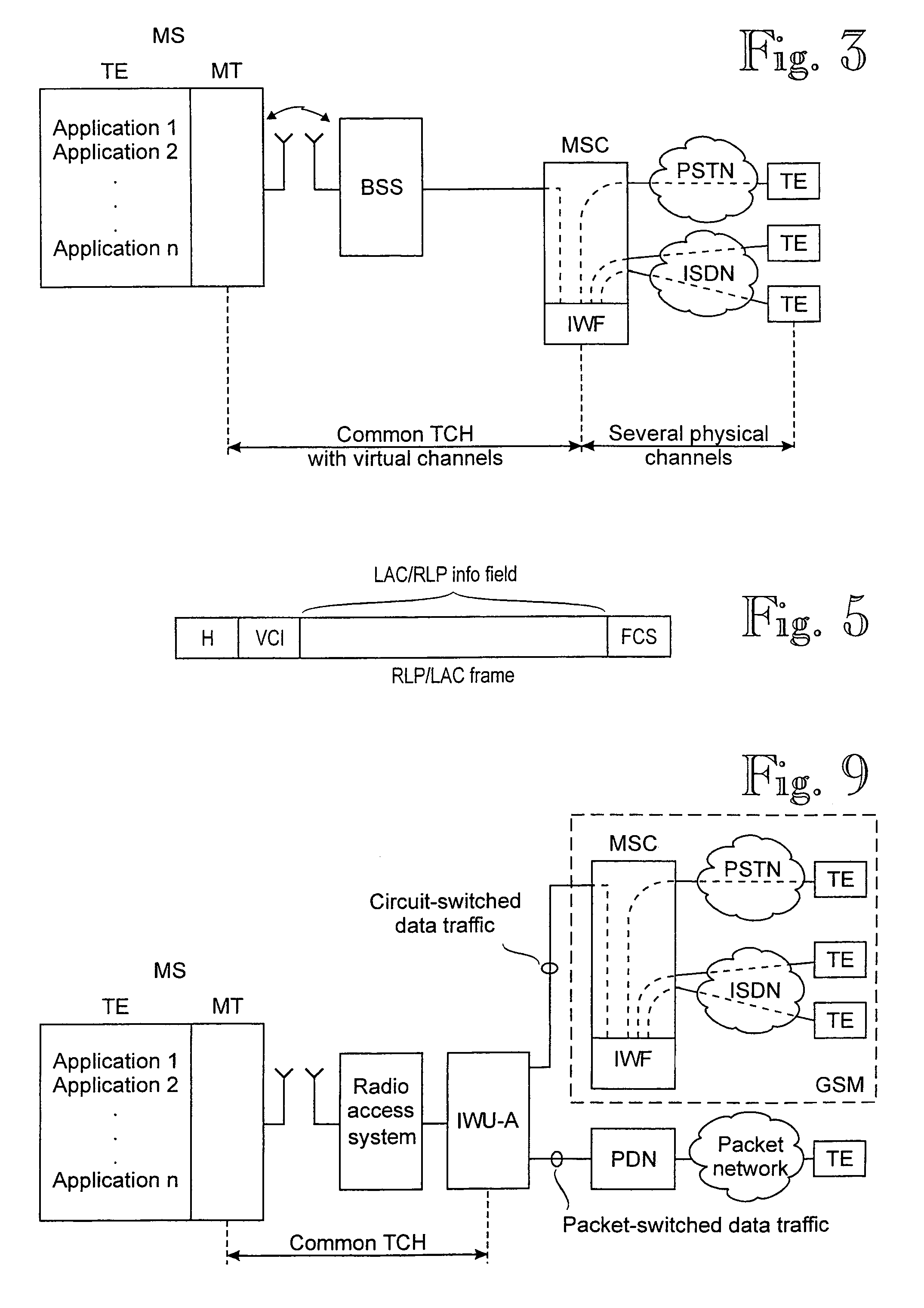Implementation of multiple simultaneous calls in a mobile communication system
a mobile communication system and simultaneous call technology, applied in multiplex communication, data switching networks, wireless commuication services, etc., can solve the problems of inability to provide multimedia calls, inability to provide special bearer services, and inability to monitor the video picture, etc., to achieve simple implementation, optimize the use of traffic channel capacity, and control simultaneous calls. simple
- Summary
- Abstract
- Description
- Claims
- Application Information
AI Technical Summary
Benefits of technology
Problems solved by technology
Method used
Image
Examples
Embodiment Construction
[0035]The present invention is applicable to all digital wireless telecommunications systems, such as cellular systems, WLL (Wireless Local Loop) and RLL (Radio Local Loop) networks, satellite-based mobile communication systems, etc. Here the term mobile communication system (or network) generally refers to all wireless telecommunications systems. There are several multiple access modulation techniques which facilitate traffic involving a large number of mobile users. These techniques include time division multiple access (TDMA), code division multiple access (CDMA) and frequency division multiple access (FDMA). The physical concept of the traffic channel varies in different multiple access methods, being primarily defined by means of a time slot in TDMA systems, by means of a spreading code in CDMA systems, by means of a radio channel in FDMA systems, by means of a combination of these, etc. In modern mobile communication systems it is possible to allocate a set of two or more basi...
PUM
 Login to View More
Login to View More Abstract
Description
Claims
Application Information
 Login to View More
Login to View More - R&D
- Intellectual Property
- Life Sciences
- Materials
- Tech Scout
- Unparalleled Data Quality
- Higher Quality Content
- 60% Fewer Hallucinations
Browse by: Latest US Patents, China's latest patents, Technical Efficacy Thesaurus, Application Domain, Technology Topic, Popular Technical Reports.
© 2025 PatSnap. All rights reserved.Legal|Privacy policy|Modern Slavery Act Transparency Statement|Sitemap|About US| Contact US: help@patsnap.com



